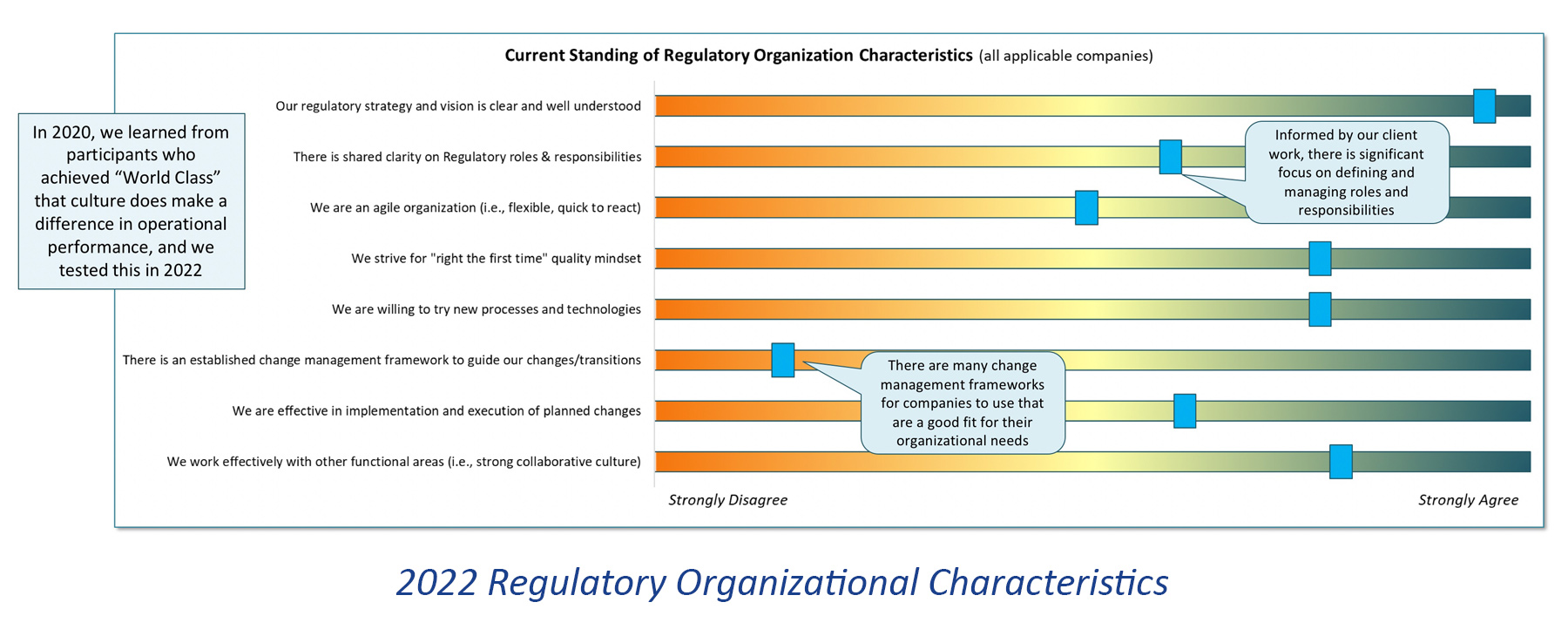Cultural Impact on Organizational Performance
By Katherine Yang-Iott
Back in 2020, we learned from companies performing at the World Class level that culture does make a difference in performance. Cultural elements, such as organizational agility or ‘right the first time’ quality mindset, not only foster an environment to support better operational performance, it also elevates chances for success and achievements.
Although these characteristics and cultural elements can be difficult to quantify, we decided to give it a shot this year in our 2022 WCRIM study and see what we could learn from benchmarking organizational characteristics.
In a new section focused on Organizational Strategies, we tested out a set of characteristics and practices, widely accepted to positively impact dynamics within organizations, by asking participants whether they agreed with the statements or not. There were statements more character-oriented (i.e., strong collaborative culture, quality mindset, aspire to be industry leader) and statements that were more action-oriented (i.e., quick to react, effective execution of plans, known decision making processes).
Character-oriented statements can be defined by how organizations view themselves and we see these as more aspirational, whereas the action-oriented statements speak to the efforts made to embody those characteristics. It’s the combination of practices from both character and efforts (what organizations believe + what organizations do) that enables strengthening performance improvements.
The image above represents the current standing of regulatory organization characteristics. Most companies have a clear regulatory vision and strategy but there’s an opportunity to improve how they define and manage roles and responsibilities. Very few companies have an established change management framework, which we believe is an important component for successful execution of project implementations. In our experience, it is common for companies to undervalue the use of a framework or depend on change agents with limited change management knowledge. Understanding and choosing a framework that best fits the needs of an organization and working with change management experts experienced in guiding planned changes will make a big difference in the outcome and success of those programs and initiatives.
As we dug deeper in the data, we noticed our cohort of 16 ‘Top Performers’ were much more systematic in their approach to organizational strategy. The alignment between their beliefs and actions are much closer together than other organizations that have high aspirations but have yet to ground those aspirations with practicality.







